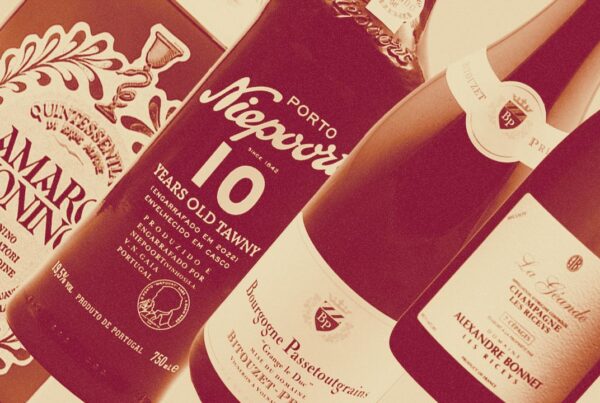Years ago, when I was a 16-year-old prep cook in the banquet kitchen for a country club, the chef taught me how to grasp a chef’s knife properly. As he showed me the way to pinch the flat of the blade between my thumb and forefinger, he mentioned that one day he’d let me use his personal knives, if I wanted: “It doesn’t get better than a Wüsthof, but they’re expensive.” I took those words as gospel and set my sights on a Wüsthof knife set as an indicator that I had finally made it in life. However, the number of readily accessible, quality knife brands has greatly expanded since I was a teenager and there’s more to consider. Nimble, precise Japanese knives have become incredibly popular, and new American bladesmiths have seemingly popped up everywhere.
With that broader selection of knives comes a broader set of price points, leaving many people wondering: How much should I spend on a kitchen knife?
There are plenty of $50 knives that will perform similarly to $300 knives right out of the box, but a knife won’t have its brand-new factory edge forever. So pricier options that can be sharpened more effectively are a worthwhile long-term investment. However, not everyone has the same budget for knives, nor are they experts in metallurgy. Don’t worry: We’re here to help.
If you’re getting ready to buy a knife, here are some things to think about.
The big drivers of knife cost
Steel
The biggest contributor to a knife’s performance and longevity isn’t blade shape or even sharpness—it’s steel type. Steel is an alloy made from a mix of iron and carbon, and different types of steel will have different elements and minerals added to give them different properties. For example, stainless steel has the addition of chromium to add rust resistance, while alloy steels might add nickel, copper, or aluminum to serve as construction material. For knives, however, it’s all about the percentage of carbon content.
High carbon content helps steel harden. By heating steel and then rapidly cooling it in room temperature oil or water, the molecules inside the metal realign into a harder version of the same material—that’s what keeps a knife’s edge sharp and prevents it from denting or rolling over from use.
Not every steel has the same features, though. The best steel for easy sharpening and edge retention is what’s referred to as carbon steel, named for the high percentage of carbon in its makeup—at least 0.6% and up to 1%. That doesn’t sound like much, but the addition of a little carbon can go a long way. However, while the addition of carbon helps knives stay sharp, it also makes them susceptible to rust and corrosion if they aren’t washed and thoroughly dried after each use.
If you look at the specs of our favorite chef’s knives, you’ll notice that they all have something in common: They’re made from high-carbon stainless steel. Stainless steel starts with a base of iron and carbon and adds corrosion-resistant chromium to make it practically rustproof. That’s where things get tricky, though—the higher the percentage of chromium, the less room there is hardenable carbon and the quicker the knife will dull. That’s why you can try to sharpen the 18/10 stainless-steel butterknife in your utensil drawer (that has 18% chromium and 10% nickel), but the edge may be gone after just a few uses.
What we’re really looking for—and what made heritage knife brands like Wüsthof so renowned—is steel with higher carbon and specific quantities of other metals like nickel and molybdenum that assist in increasing the knife’s hardness while retaining corrosion-resistant properties. These steels are slightly less hardenable than standard carbon steel, but they’re much easier to care for and stay shaper than the stainless steel in your silverware.
Sometimes referred to as supersteels, these high-carbon stainless steels deliver sharp performance and good longevity—but they also cost more than the basic stainless steel that the $15 knife at your local grocery store is made out of.
There are different degrees of high-carbon stainless steel as well. Our favorite chef’s knife from MAC is made from a proprietary high-carbon stainless steel the knife maker developed in-house that makes its knives slightly more expensive. One of our favorite mid-priced knife makers, Tojiro, uses a Japanese-developed supersteel called VG-10 that’s mass-produced in large factories, cutting down somewhat on their material costs and letting them keep their prices lower. Our budget pick from Mercer Culinary is also made from high-carbon stainless steel, but from a cheaper mass-produced German alloy. While all three high-carbon stainless steels perform well out of the box, the more expensive versions are easier to sharpen and hold their edges longer, adding years to their lifespans.
Handle
Unlike steel type, which you probably won’t notice until you’ve thoroughly test-driven a knife, you’ll develop an opinion about its handle as soon as you pick it up. When you look at our favorite nakiri knives, you’ll see three different handle styles. The Tojiro DP Damascus Nakiri has a triple-riveted, engineered wood handle, while the Global Nakiri’s handle is forged from the same knife steel, and the Mercer Culinary Genesis Nakiri has a grippy rubber-like handle. And those are just a few. You can also find wa handles (the bolster-free design popular on Japanese blades), chunky fibrox handles, or woven fiberglass handles on high-end knives like those from New West Knifeworks.
As important as the material and design of a handle is whether or not it’s full-tang. A full-tang blade means that the spine of the knife runs all the way back, forming a full handle shape of steel that scales are then riveted to. This type of construction is highly valued for adding extra weight to the back of the knife, providing better balance and strength to the knife overall. It also requires more steel than a partial-tang knife, adding to the raw material costs. These handles are often more comfortable to hold and more durable, ensuring the handle lasts as long as the blade does—over time, grippy rubber-like handles can start to break down and wear off.
Finishing
Aside from handle construction, another big factor in the cost of a knife is the finishing detail. While we love Tojiro knives (and have tested many), the corners of the spine aren’t always sanded as smoothly as we’d like, sometimes with small burrs left from the manufacturing process. Compared to, say, the rounded corners of one of our favorite paring knives from Shun, you can start to see some of the extra finishing work that goes into the more expensive knives we recommend. These details don’t affect the performance of either knife, but paying an extra $20 or $30 can result in a more polished knife.
Aesthetics
Well-made chef’s knives can be more than tools; they can really be works of art. Whether it’s a custom-designed handle material, flourishes like an inset bolster or intricate patterned steel, many expensive knives cost more because they require more work to make. For example, Shun’s knives are made with a Damascus forged steel technique—that means different steel types get layered and welded together in the forge in a way that leaves an intricate wood-grain style pattern on the flat part of the blade. Sword makers in centuries past used the technique to make the steel stronger, but these days it’s as much decoration as anything. Shun’s knives are also made with san mai construction—that means that the Damascus-patterned steel acts as a sandwich around a core of VG Max steel (proprietary to Shun), which actually contains the cutting edge.
That extra embellishment is beautiful, but it requires someone making the knife to forge those layers by hand, with Shun claiming every knife has “at least 100 handcrafted steps” to complete each knife.
Other embellishments might be hand-hammered pock marks along the spine, custom grind patterns that show off the knife’s edge, or custom-designed rivets with inlay mosaic patterns. Because kitchen knives are a daily-use tool, it might be worth it to invest a little more in a beautiful knife that you like to look at as much as you like to slice with it.
So, Just How Much Should I Spend on a Knife?
We stand by the performance of all our knife recommendations from top picks down to the sub-$100 budget options. The big difference is that our mid-price and high-end picks are made from higher-quality steel with better finishing touches and will likely perform to high standards for many, many years, while our budget picks will likely need to be sharpened more often, cutting down on the lifespan of the blade.
But to offer a specific answer, most home cooks would benefit from investing at least $150–$200 in a chef’s knife. Chef’s knives are daily-use knives, and it’s worth having a go-to in your kitchen that performs well, is comfortable to use, and, importantly will last for years. When it comes to auxiliary knives like cleavers, nakiri knives, bread knives, and paring knives, be sure to balance your budget against your planned daily use—a smaller collection of high-end knives will likely suit you better than a broad collection of less expensive options.
There’s no wrong way to go as long as you pick a sharp knife made from high-carbon stainless steel that’s comfortable to hold—just remember that your mileage may vary based on your skill level and how much you cook, and that spending a little more now might save you from having to repurchase later. And in the end, that may cost you more anyway.
More on our favorite knives
Source link









